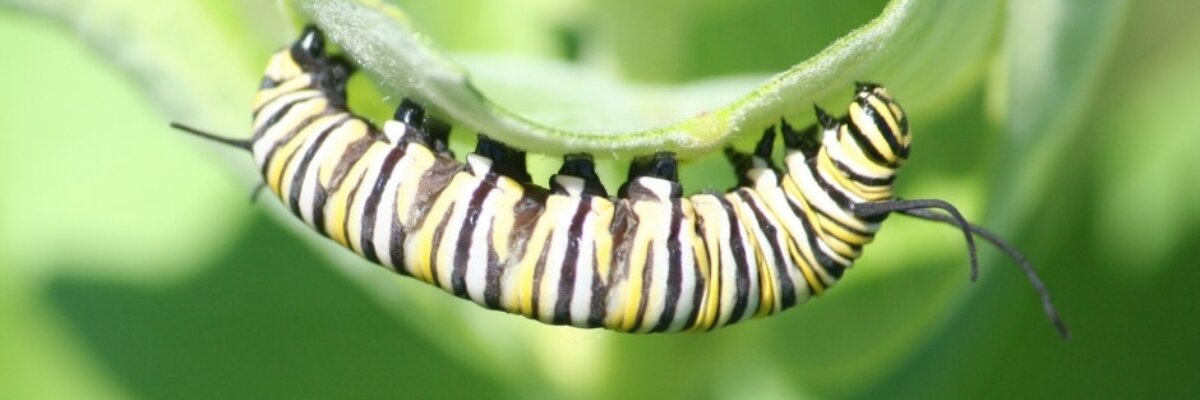
Nectar Plants
- What host plants can I plant to bring other butterflies to my garden?
Just as monarchs need milkweed, other Lepidoptera (butterflies and moths) species require host plants for development. Some are specialists, meaning that they require a particular type of plant, but others can eat a variety of different plants. Depending on the region that you live in, you can attract different kinds of butterflies by growing the plants that their larvae need to develop, in addition to nectar sources that the adults use. Check out the North American Butterfly Association's Butterfly Garden and Habitat webpage for more information and regional butterfly gardening guides for more ideas about what plants to use in your area.
- Where can I find free or low cost milkweeds and nectar plants?
Here is more information on finding funding for your monarch project. There is also information about finding milkweeds native to your area on our website, www.plantmilkweed.org. You may also apply for Free Milkweeds for Restoration Projects through Monarch Watch's Milkweed Market.
Don't forget to check with friends, neighbors, or your local garden club to see if anyone has seeds from native milkweeds or other wildflowers that they have collected and would be willing to share. Some forbs (flowering plants) may also be easy to split or transplant if someone you know is looking to get rid of them.
- What should I do if I can't find an appropriate source of local native milkweeds or nectar resources that are recommended for monarchs?
This reason for this problem comes back to the principles of supply and demand. The commercial availability of native milkweeds and nectar sources is driven by the demand for those resources and a response in the supply chain will not always be immediate. Producing native plant materials is a long-term process and can sometimes be a risky investment for plant producers if they aren't sure about the long-term demand for those plants/seeds. It is important that we continue to drive increasing demand for these native, locally sourced plant materials to increase their availability over time and hopefully to drive down the cost as well. Since supply is often limited for native milkweeds and nectar sources, get your orders/requests in early. If vendors sell out during the spring, they may begin taking pre-orders for the following fall or spring.
If you haven't already done so, make sure that your site is ready for planting. There are different methods for site preparation, such as solarization, you can use to ensure the area is as weed free as possible to increase the success of the native plants you are trying to establish. Even if native milkweeds are not available when you are ready to plant, establish a high-diversity mix with other native forbs and grasses. These habitats will still be beneficial to monarchs and other pollinators, and you can plan ahead to augment the habitat in years following with milkweed plants/plugs. Another option would be to use annuals or some sort of cover crop on the habitat area during that season. This could prevent weedy species or invasives from taking over a site that you have prepared for planting and will allow time for you to find an appropriate source of seeds or plants for the habitat. Depending on what is planted, it may also provide some floral resources for pollinators.
- How do I choose which species to plant for monarchs and where can I find local sources?
Native milkweeds and nectar plants are essential for monarchs. Monarchs need milkweed for egg laying and larval development and need nectar resources to support adult butterflies during breeding and migration. Both should be included in any monarch habitat. We recommend planting native, locally sourced species that are well-adapted for your region and more likely to thrive in your area's conditions. You can find information about how to choose which milkweed and nectar resources are right for you from our www.plantmilkweed.org website. This website also provides guidance on locating appropriate seed and plant materials near you, and considerations for different types of restoration or enhancement projects, like gardens or larger natural areas.
- Is there any value of habitat that has nectar sources but no milkweed sources for monarchs? Or, is the push really to focus on milkweed in the habitat?
Monarchs need milkweed throughout the spring and summer to successful reproduce. However, in addition to milkweed plants, nectar sources are extremely important for adult monarchs throughout the breeing and migratory seasons. Nectar sources are of highest priority during the fall migration, when adults are storing energy to survive the winter at their overwintering locations. All habitat restoration efforts should plan for both milkweeds and nectar sources.
- Which flowers do monarchs use for nectar?
Adult monarchs nectar from a variety of blooming plants. Most importantly, make sure that there is nectar available throughout the growing season by providing a highly diverse foraging area. Some species are favored over others, depending on your region. The Xerces Society has regional monarch nectar plant guides, which highlight plants that monarchs have been documented nectaring on. Lists of recommended nectar plants for pollinators in general by region can be found at The Xerces Society and the Pollinator Partnership.
